If you’re looking for an easy approach to teaching kids art, there’s no better system than using the elements and principles of art.
This is the fifth tutorial in our Series CONNECTING WITH THE ELEMENTS – How to teach the Elements & Principles of Art. This week I’m talking all about Movement & Rhythm.
What is Rhythm and Movement and why is it important?
MOVEMENT is the path the viewer’s eye takes through a work of art. Movement can be directed along lines, edges, shapes and color.
RHYTHM is created when one or more elements are used repeatedly to create a feeling of movement. Rhythm creates a mood like music or dancing.
In our membership program, The Sparkler’s Club, we follow a path for teaching the Elements of Art & Principles of Design. So far in our series we’ve covered: Line & Pattern, Shape, Color, and Contrast & Emphasis. Scroll to the bottom of this post to click through to the series.
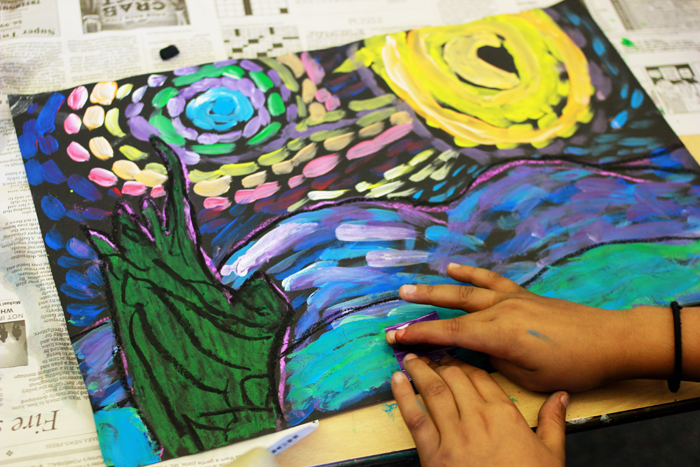
Lessons that teach Movement & Rhythm
Younger students learn how to create a sense of movement and rhythm by painting the swirling lines in a Van Gogh painting or by drawing figures that show movement like in an art project from Degas or from a book like Giraffe’s Can’t Dance. Both examples show that a work of art isn’t meant to be static.
By creating these types of art projects, children begin to grasp the idea of using implied line to direct a viewer’s eye through the work of art achieving movement.
Here are a few questions you might begin to ask children of various ages:
Kinders: What type of lines create movement?
First & Second Grade: How can I make a figure look like it’s moving? Or, how can I use line, shape or color to create movement?
Third and Fourth Grade: How is repetition used with movement? Or, why is movement important in art?
Fifth & Sixth Grade: What is the relationship between diagonal lines and movement?
MOVEMENT FISH ART PROJECT
In this video, I share with my Facebook audience various art projects to use when teaching Movement & Rhythm to your students, as well as my favorite, Warm and Cool Movement Fish.
Want to watch the Art Tutorial Video through our Deep Space Sparkle Facebook page? Click HERE
* This video is also available to you if you’re a Sparkler in the Sparkler’s Club. Click HERE for the link to the Movement & Rhythm EPIC Curriculum Bundle.
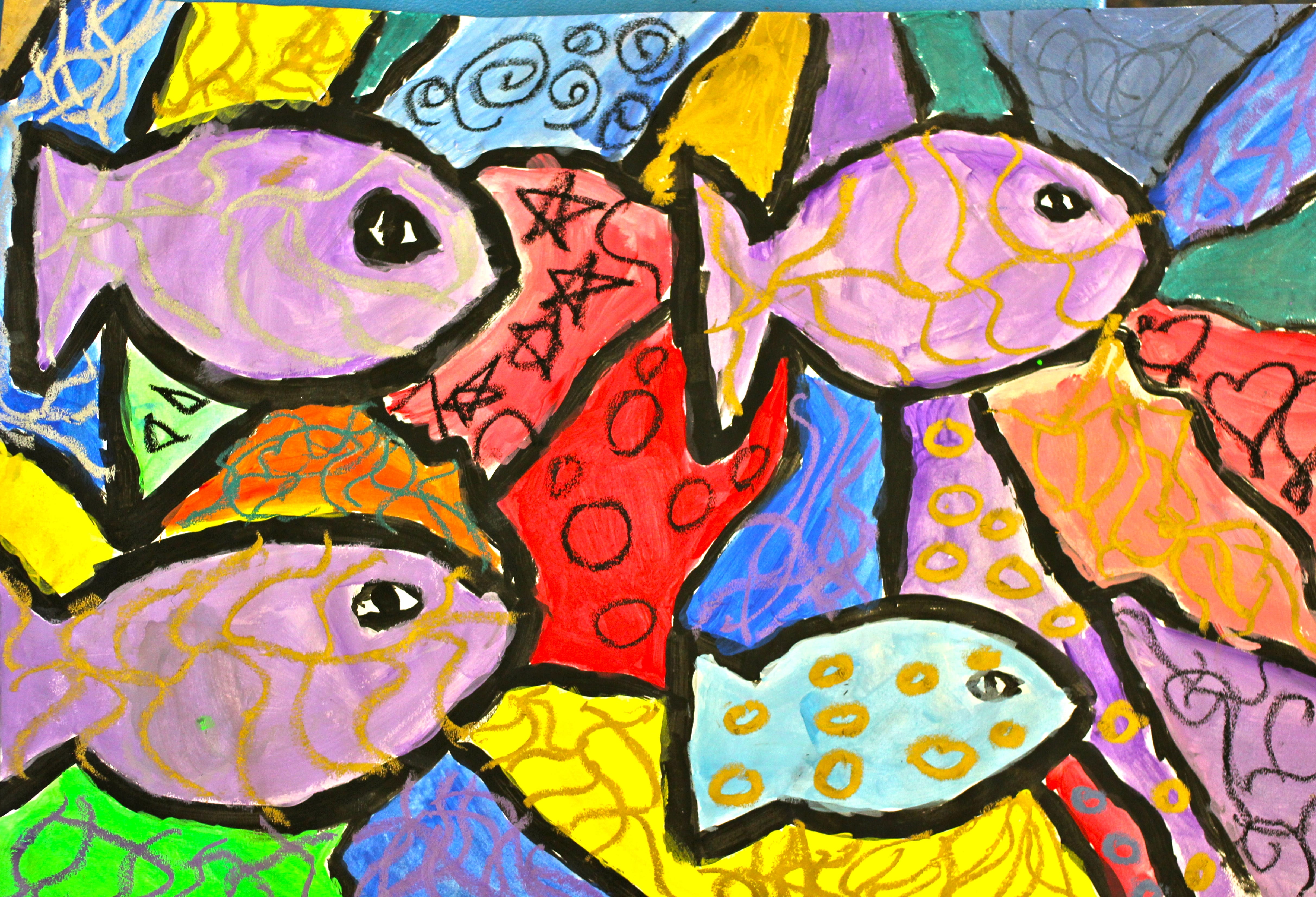
This lesson is based on a piece of art by artist Sandra Silberzweig. The art combines color, lines and patterns…a perfect example of covering many elements of art in one lesson. But for today’s focus on Movement & Rhythm, encourage your students to repeat the drawings of their fish to encourage the viewers eyes to travel down the paper.
What You’ll Need:
– 12” x 18” white paper
– Liquid tempera paint
– Black liquid tempera paint mixed with some water OR a black oil pastel/crayon
– Small tip round brush
– Metallic oil pastels or metallic liquid tempera paint
Drawing the Fish
Drawing the design without the use of pencils is not a big deal for my students. Starting in Kindergarten, they practiced drawing with a brush. I feel it can be the most expressive of all the drawing tools, but if your students aren’t used to drawing with a brush, you can use a black oil pastel.
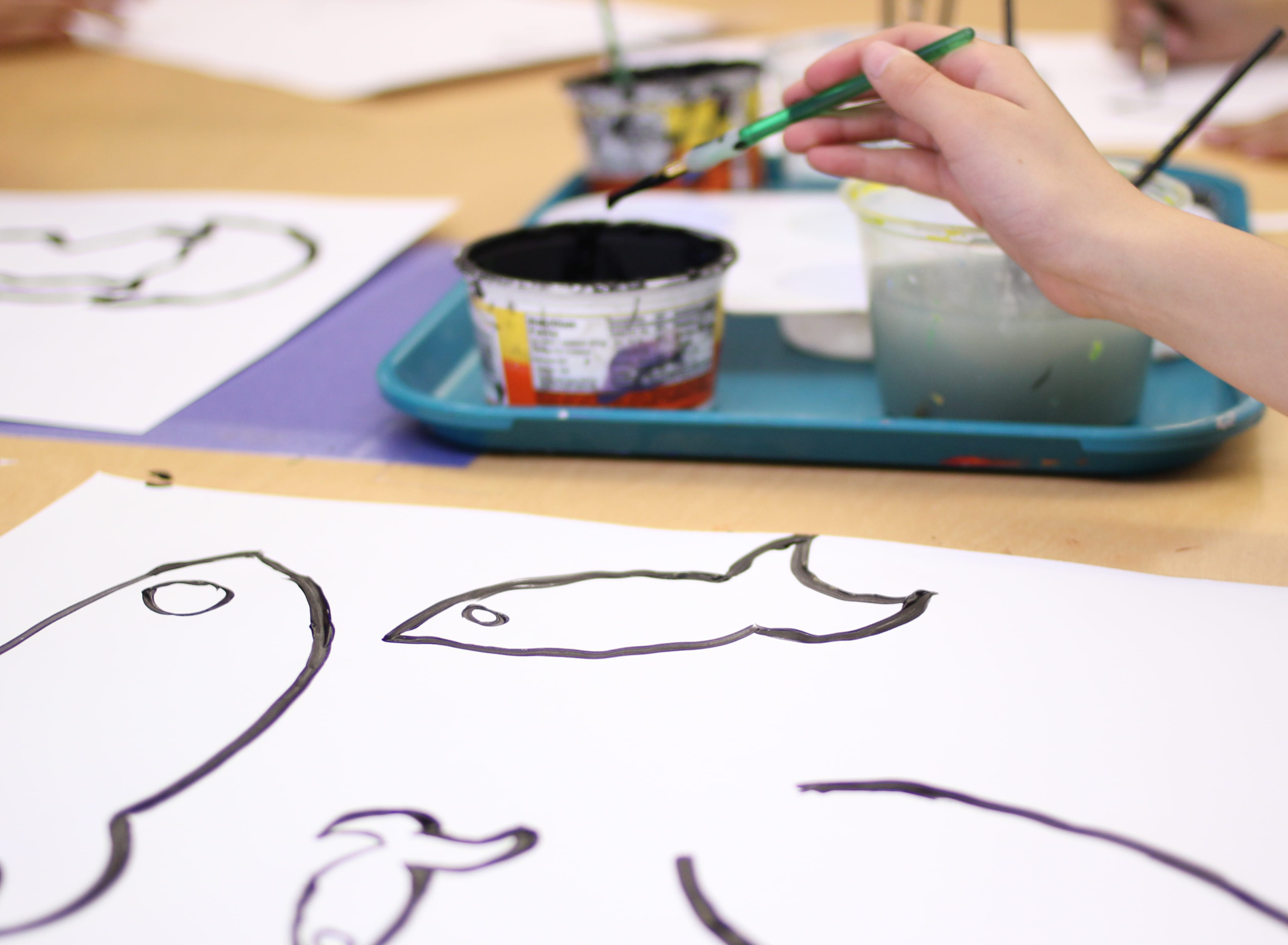
Draw the fish first. I challenged my students to draw three large fish and three smaller fish. This proved to be somewhat difficult to control as some kids heard “fish” and drew many sized fish.
Most were able to draw fish to the size that is easiest to paint. As I walked around and watched the children draw, I mentioned a few times that it’s difficult to paint lines, so all fins, tails and other protruding parts should be shapes.
Even in fifth grade, this can be a hard concept to grasp, so be on the lookout for lines. Some of my students drew jelly fish after asking me if they can draw any fish…you can see where this is going. I said yes, but tentacles are lines and lines are hard to paint. We brainstormed how some tentacles could be turned into shapes.
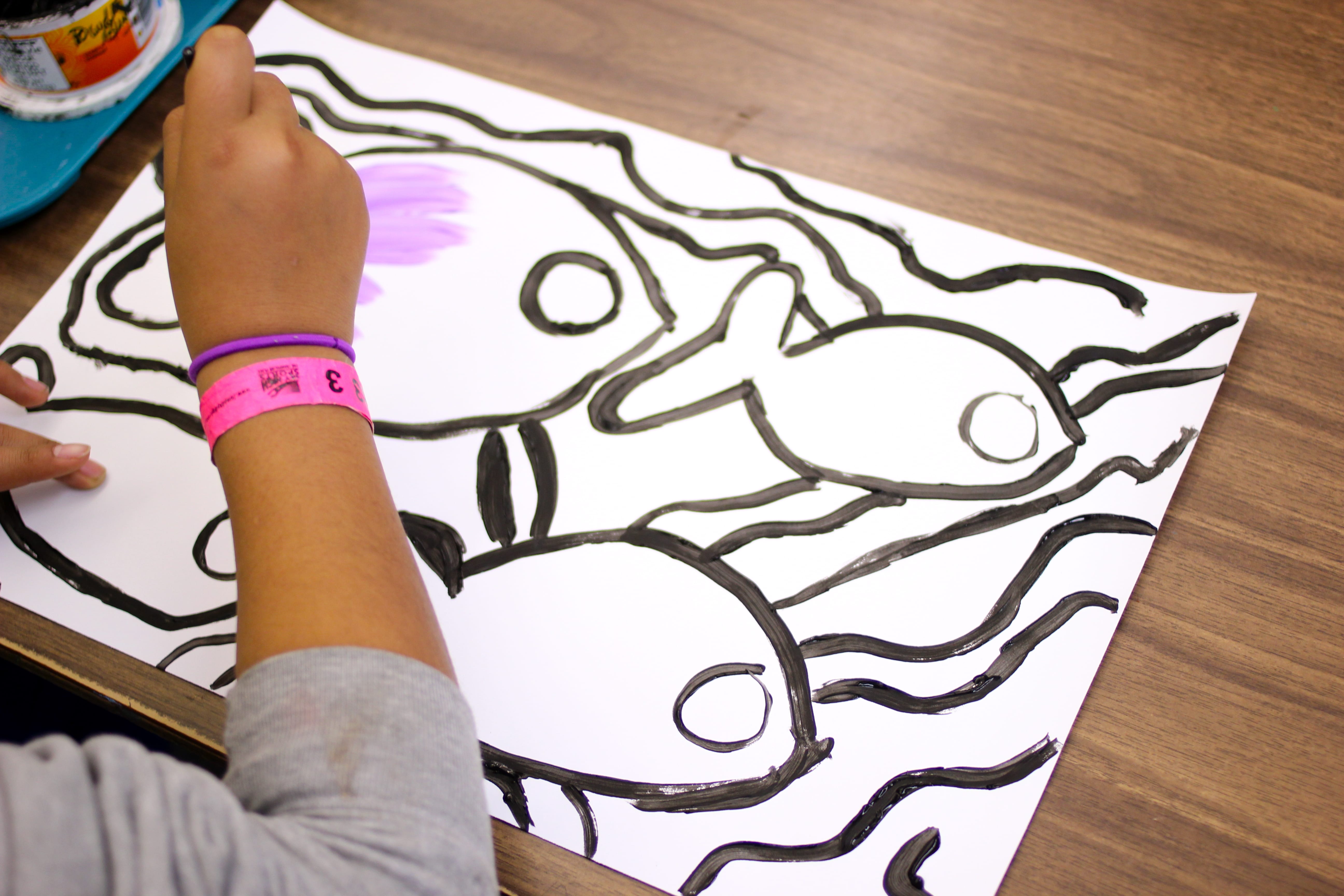
Painting in the swirly background comes easier to some children than others. I imposed some rules: lines must connect. This means that no line could have a dangling end. The goal is to achieve a shape with the lines.
Painting the fish can take up to two, 50- minute classes. Sometimes smaller details require more time than larger paintings.
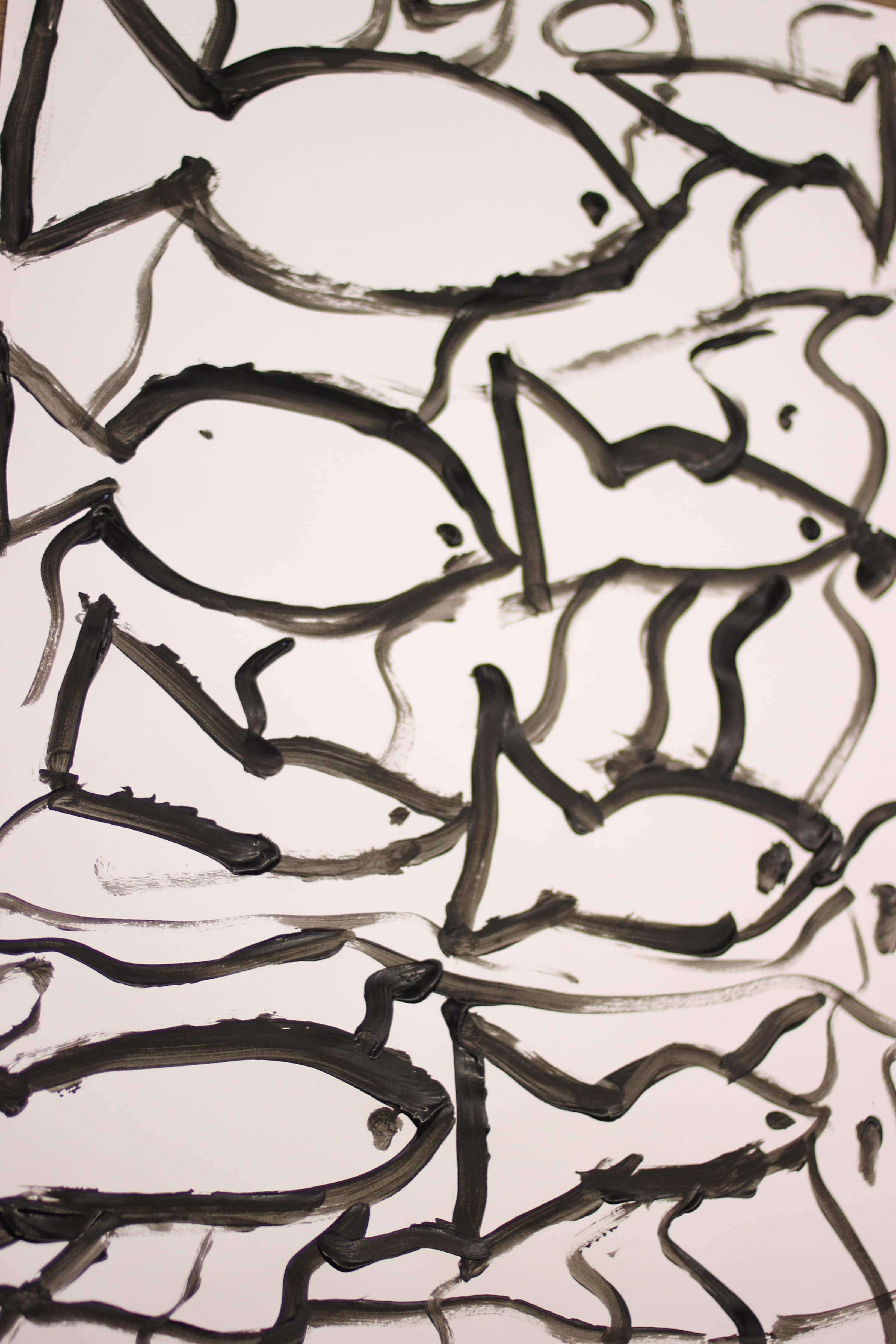
Double-Loading technique
The children used the double-loading technique that I am so fond of teaching. Double-loading is a time saver, too. Children can become obsessed with creating the perfect tint and never finish the piece.
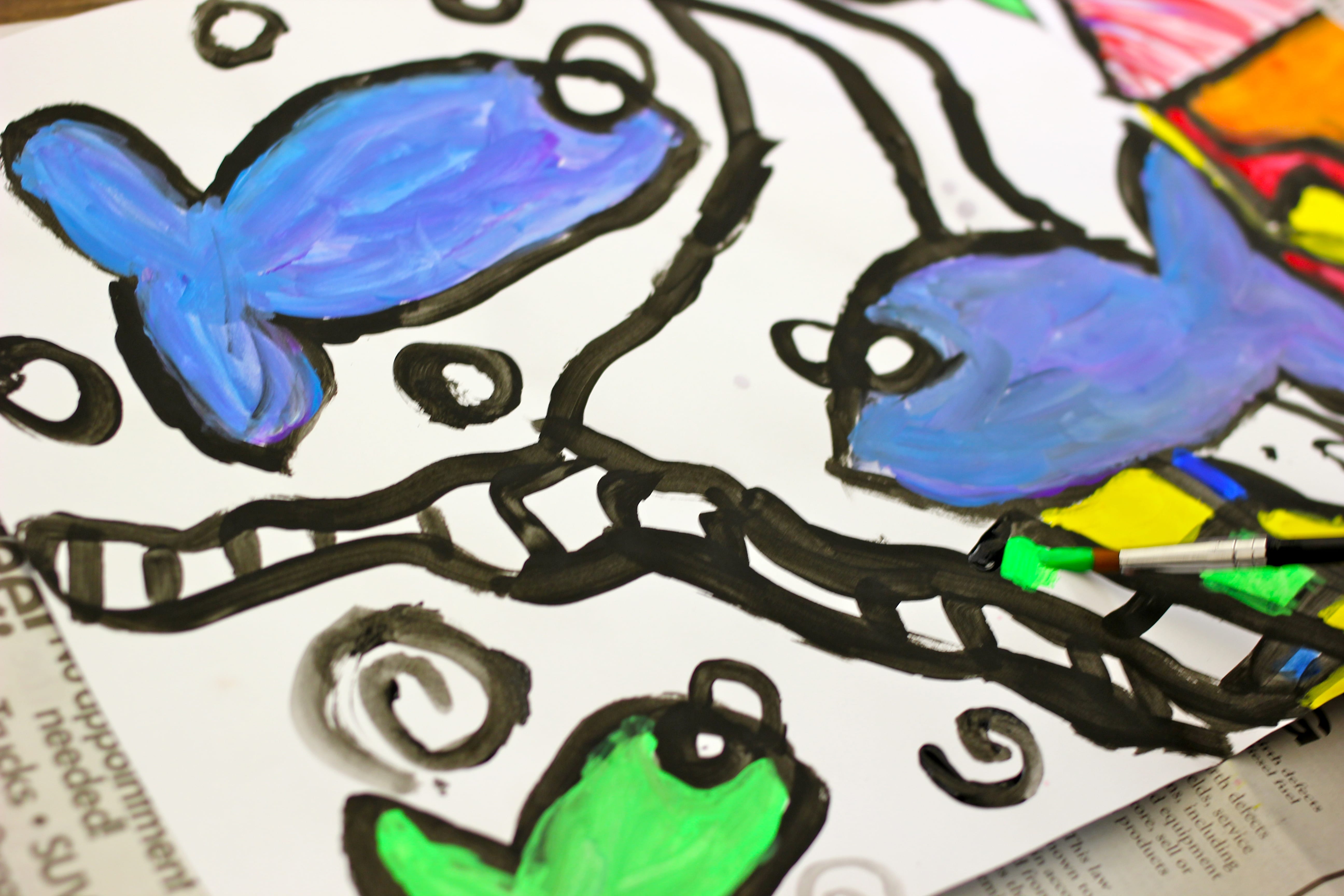
To help the fish “pop” from the sea of embellishments, I imposed the rules of three: paint the large 3 fish the same shapes and the smaller 3 fish the same shades.
Did all the kids do this? No, of course not. But it is an important design concept: if the background is multi- colored, then the fish should have some consistent color in order for them to stand out.
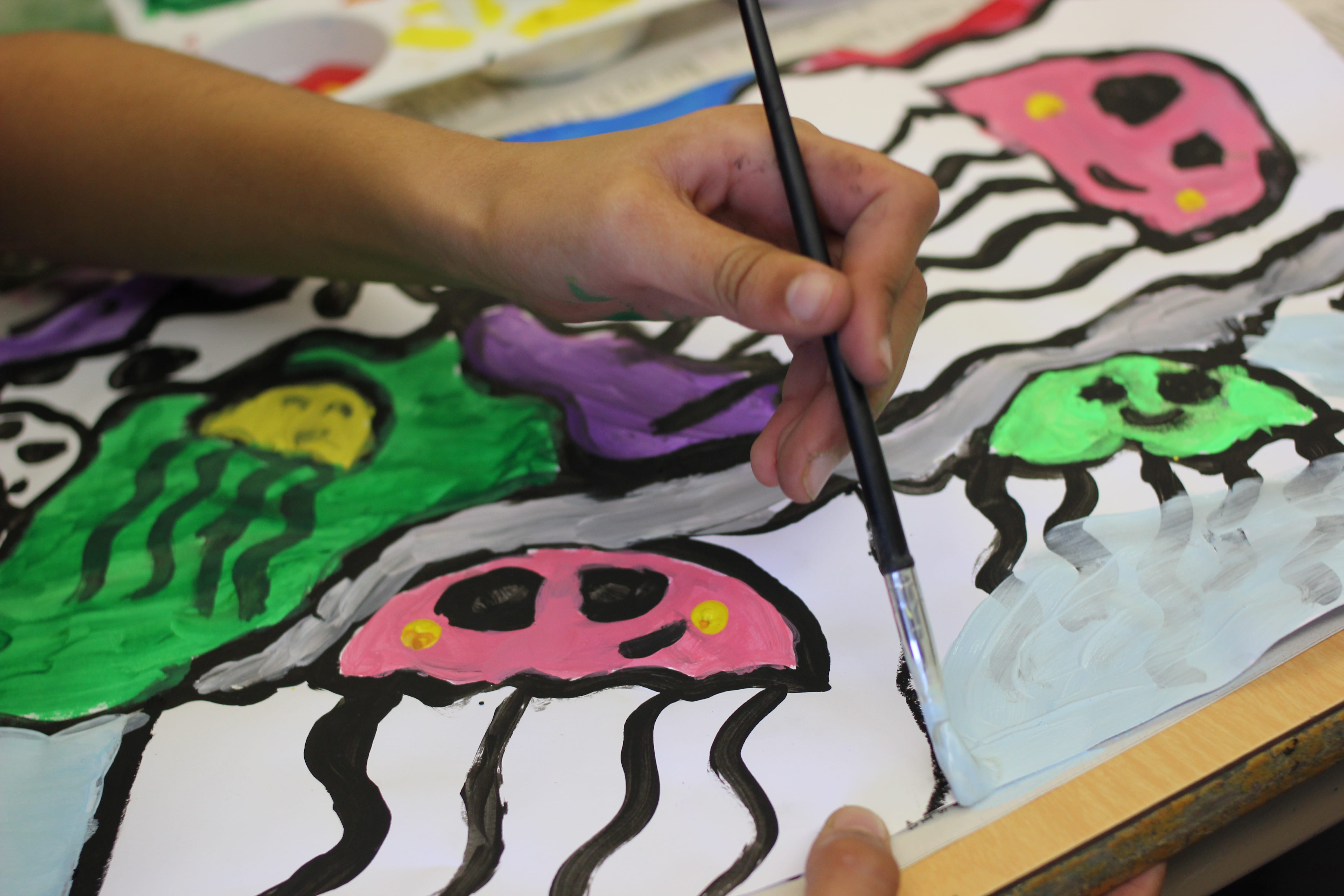
Fifth Grade Gallery
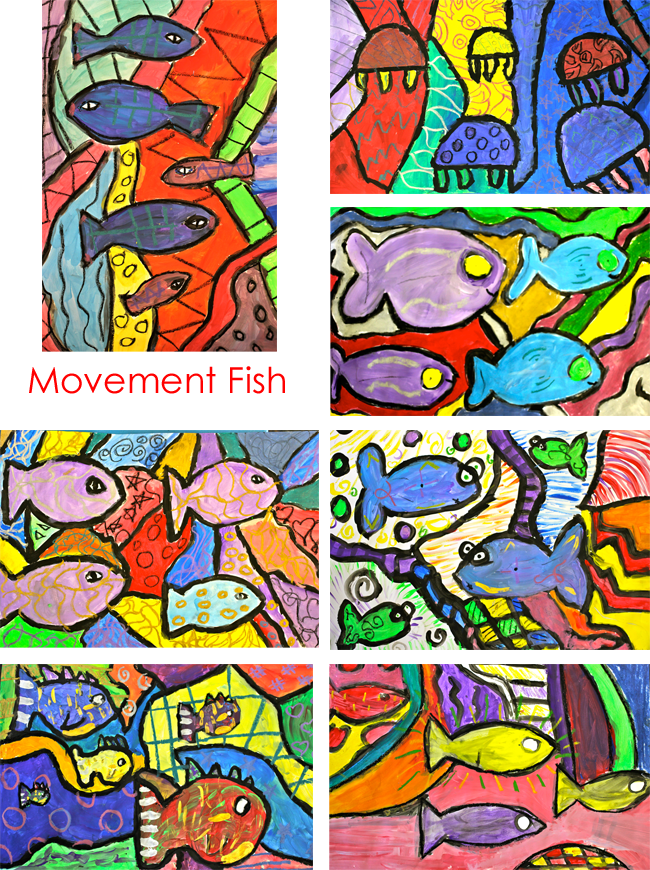
DOWNLOAD A MOVEMENT & RHYTHM PROJECT GUIDE
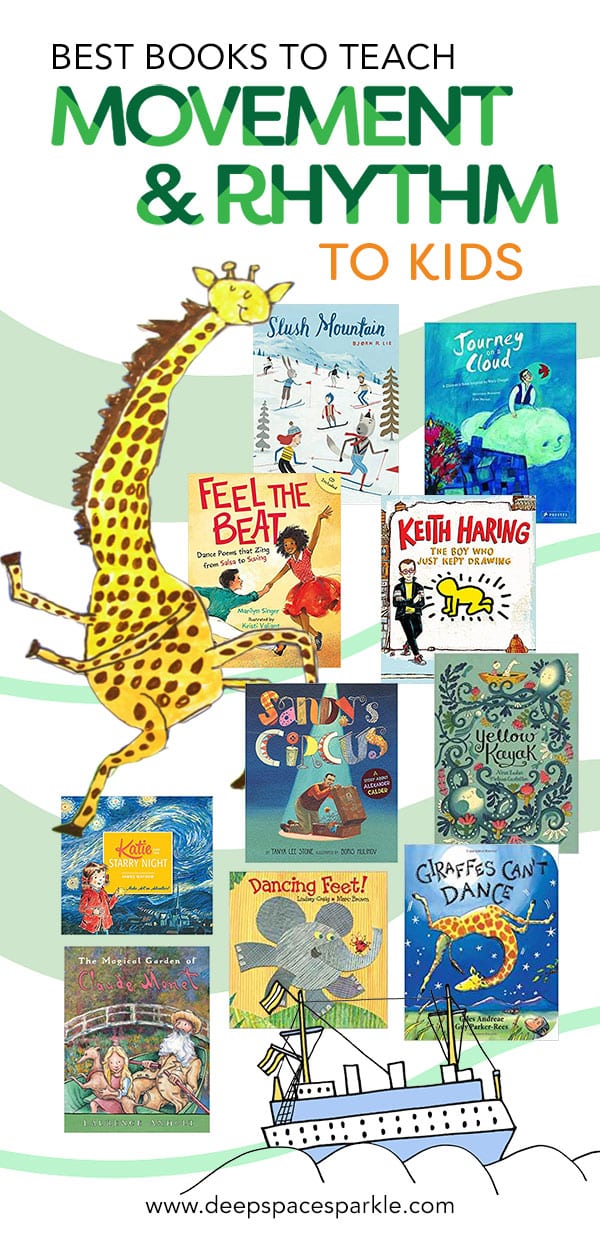
Books that express Movement & Rhythm
Slush Mountain by Bjorn Rune Lie
Journey on a Cloud by Véronique Massenot
Feel the Beat: Dance Poems that Zing from Salsa to Swing by Marilyn Singer
Keith Haring: The Boy Who Just Kept Drawing by Kay Haring
Sandy Circus by Tanya Lee Stone
Yellow Kayak by Nina Laden
Katie and the Starry Night by James Mayhew
Dancing Feet! by Lindsey Craig
Giraffes Can’t Dance by Giles Andreae
The Magical Garden of Claude Monet by Laurence Anholt
*This post contains affiliate links
To watch previous art tutorials and download the worksheets, click the links below:
Line & Pattern Art Tutorial & Worksheet
Shape Art Tutorial & Worksheet
Color Art Tutorial & Worksheet
Contrast & Emphasis Art Tutorial & Worksheet
ARE YOU A SPARKLER?
Head over to the private Sparklers’ Club website and click on EPIC Curriculum. You can watch the edited Art Tutorial Videos and download all of the lessons and resources to support the Contrast & Emphasis Bundle.

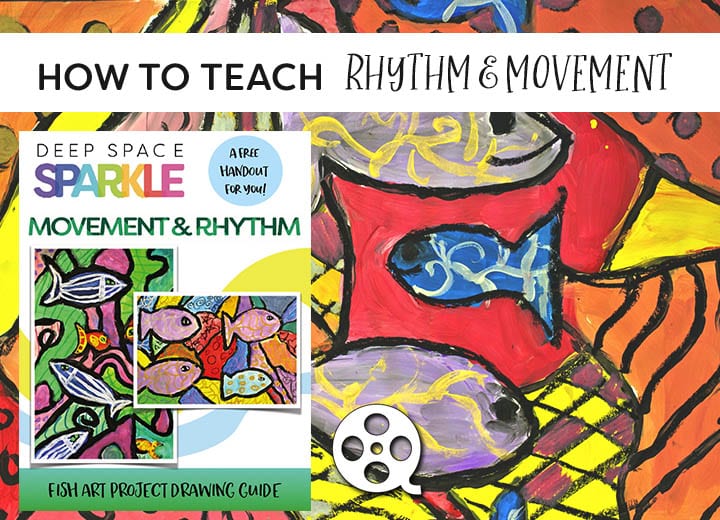












Join me now
Hey, I really liked the art lesson and helped do my art! It really helps me think about art and showed me things I’ve should of done doing art.
These are wonderful. Really help me draw with kids. Thanks a million.
I am a qualified and freelancer VA teacher. I was looking for some resources for my current project for kids, named “Our pioneer artists”, I came across this article. I found it extremely useful. I wish I could attend in your workshop. (I am living in Sydney, Australia.) However, I would appreciate it if you share you material with me. Regards, Angel
For 3rd graders, how many 50 minute classes would this take? You said 2 to paint the fish, but is that for the whole project, or just painting the black outlines of the fish?